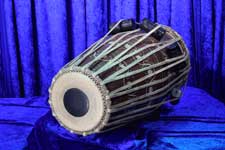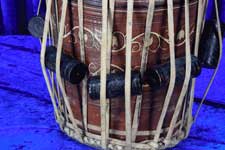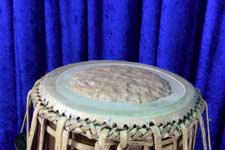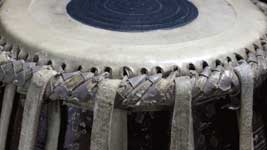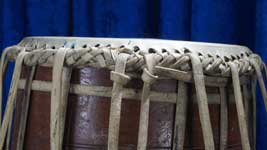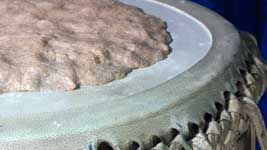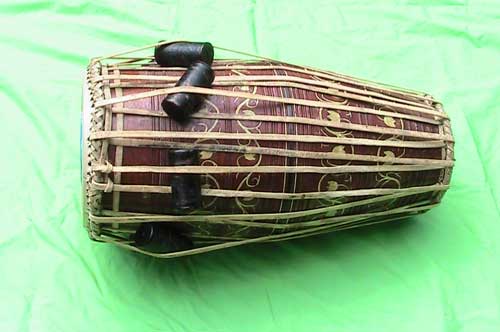
Pakhawaj is essentially a north Indian version of the mridangam and is the most common north Indian representative of the class of barrel shaped drums known as mridang. (The mridang class also includes mridangam, khol, maddal, pung, and a host of other drums.) Pakhawaj was once common throughout north India, but in the last few generations tabla has usurped its position of importance. It has a right head which is identical to tabla except somewhat larger. The left head is similar to the tabla bayan except that there is a temporary application of flour and water instead of the black permanent spot. It is laced with rawhide and has tuning blocks placed between the straps and shell.
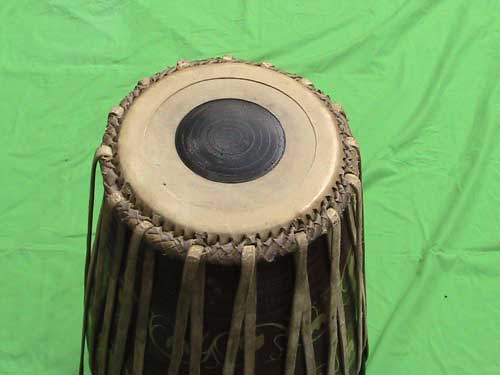

There are several styles of pakhawaj playing. The most well known and important is for the accompaniment of dhrupad and dhammar singers; this however, is falling out of fashion. Pakhawaj is also very much used for Odissi dancers and occasionally for kathak. It is also found in a classical form from Rajasthan known as Haveli Sangeet.
Pakhawaj compositions are passed down from generation to generation. Like the tabla, they are taught by a series of mnemonic syllables known as bol. There are major differences between the tabla bols and the pakhawaj bols. This is often confusing to musicians who wish to play pakhawaj compositions on the tabla.
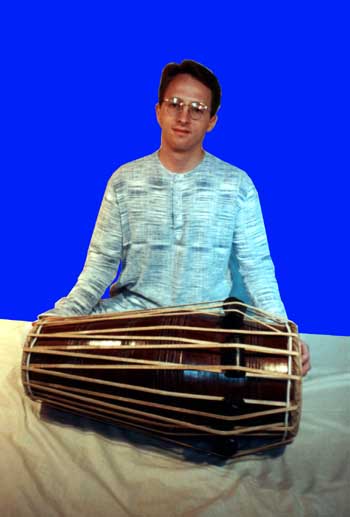
The playing position is easy. For the right-handed person, the smaller end is placed on the right hand and the larger side is placed on the left side. The right side is usually raised slightly by placing a small rolled up piece of cloth under it. The whole is place in front of the musician as shown in the illustration.
For more information on pakhawaj and tabla concepts check out “Fundamentals of Tabla”
Photo Gallery
Click on link
